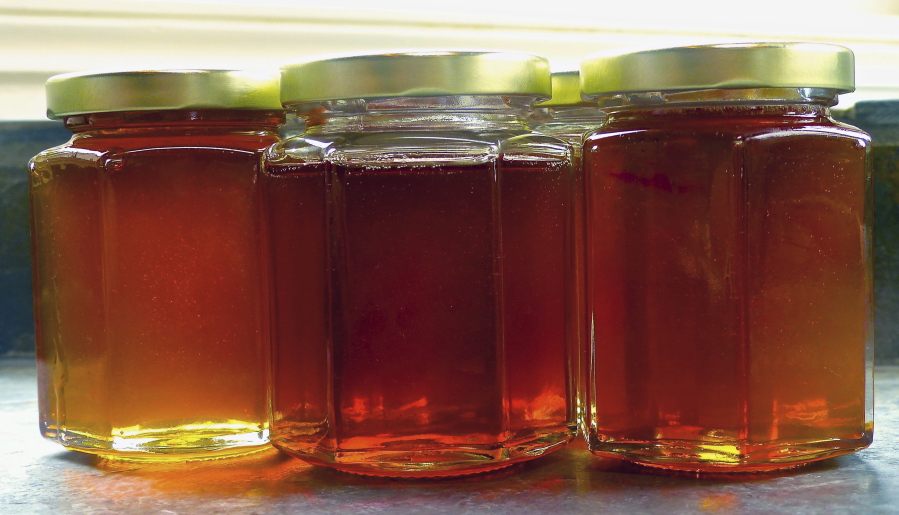Gardeners make good friends, especially during the holidays when they give out foods preserved from their gardens.
The top five canning recipes used during the holidays are for applesauce, cranberry sauce, jalape?o jelly, apple pie filling and sauerkraut, according to a recent survey by Jarden Home Brands, makers of Ball-brand mason jars.
There appears to be a distinctive second season for food preservation — a spike from late November into December made by canners who want to share homemade gifts in jars.
“Many consumers can syrups, jellies and sauces to give away as holiday gifts, along with crafting and decor use for the holidays,” said Jeff Marvel, a Jarden spokesman.
The jars themselves can be collector’s items, and serving accessories on tables or sideboards.
“People prefer to see the vibrant colors of their fresh-packed tomatoes or peaches in clear glass,” said Judy Harrold, Jarden’s Consumer Affairs manager. “Things like granola and layered cooking mixes tend to look better in colored jars. The same goes for non-food items like candles, potpourri, bath salts and collectibles.”
Gardeners’ holiday gifts are driven in part by the kinds of edibles harvested late in the growing season, and in part by traditional holiday menus.
Younger canners are using ingredients from all over, Harrold said. “They rely more on farmer’s markets than they do backyard gardens for their produce. And they only go to the grocery store when they don’t have an ingredient to fit into their recipes,” she said.
All of the food preservation techniques — canning, freezing, dehydrating, fermenting and cold storage — delay or stop spoilage while sealing in flavor and nutritional value. But home canners must use the proper techniques so they don’t pass along any food-borne illnesses.
Under-processing canned goods could lead to bacteria in the food without any signs of spoilage, said Elizabeth Andress, a University of Georgia food safety specialist.
“Gift giving is not a good time to experiment or try new procedures,” Andress said. “If you’re talking canning, don’t experiment with anything in the low-acid realm at all.” That would include meats and vegetables.
Also, ensure that the jars you use are meant for canning.
“Some jars are intended for non-canning purposes, like crafts,” and can’t withstand the heat or temperature changes of the canning process, Andress said.
Be descriptive with jar labels. You can make your own or find labels made to order online.
“In addition to letting the receiver know exactly what the food is by listing the ingredients on the label, it’s a nice touch to recommend how to use it,” Andress said. “Things like apple rings or chutneys or pepper jellies. The latter is especially good with cream cheese.”



